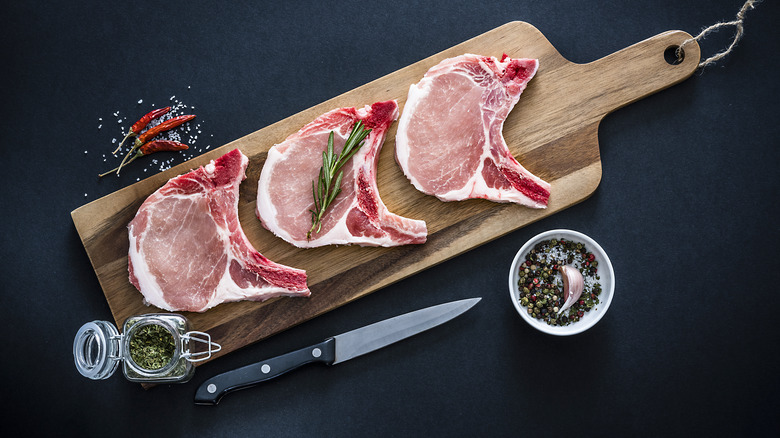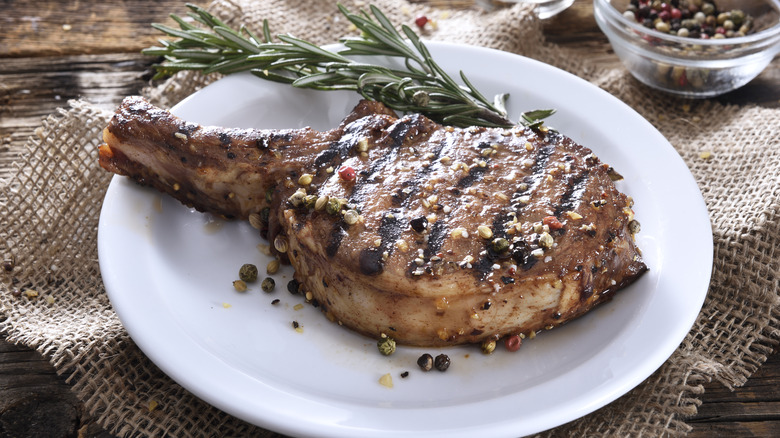When Picking The Right Pork Chop, Thickness Matters
When it comes to satisfying weeknight dinners, there are few other cuts of meat more iconic than the humble pork chop. It's easy to come by, relatively inexpensive, and fairly straightforward to make. It can be served as a simple, pan-seared protein, or battered and deep-fried Southern style.
No matter how you like to cook your pork chops, one thing you always want to remember is thickness. The thickness of a pork chop has a bearing on how much you'll have to pay for it. It will also help to determine how best to cook it and, therefore, what recipe you should use.
Don't be afraid to ask your butcher for custom cuts. Thick-cut pork chops would be anywhere from one to one-and-a-half inches thick and are great for cooking gradually on the grill. Thin-cut chops come in a range of one-eighth to one-quarter-inch thickness. These cuts are perfect for pan searing or deep frying. Three-quarters of an inch is a great middle ground. Pork chops with this amount of thickness will have enough meat to achieve a nice medium-rare doneness without having to overcook the surface of the pork. If you're really comfortable with your butcher, try requesting boneless loin chops sliced super thin in the deli slicer for easy stir-fried meat.
The best ways to cook your pork chops
Whether you get thick or thin pork chops, certain recipes suit each type best. Thinner cuts tend to dry out faster, but that means they work well with sauces that can keep them moist. Pork chops and applesauce are a bonafide American classic. For something more savory, boneless pork chops with mushroom gravy is a great recipe to try. This dish combines pan-searing with a savory sauce that cooks the pork all the way through while keeping the meat juicy.
For thicker-cut chops, fire up some charcoals and get the grill ready, because these cuts love open flames. Bone-in pork chops are great to buy in a thicker cut. They also aid in the grilling process, as the bone protects the meat from drying out. Grilling boneless chops is actually one of the many mistakes people make when they take their pork to the backyard.
There's a lot of freedom to experiment with different seasonings, as well. Simple salt and pepper combine to create a can't-miss meal, but pork also takes well to marinades. Try using the staples you already have in your pantry — like olive oil, soy sauce, brown sugar, dried herbs, and Dijon mustard — to create a marinade. This is a great way to cook economically, while still maximizing the flavor of the humble pork chop.

